47 Automatic Organizing – The Gestalt Principles
Our visual systems “carve” the visible world into objects in an automatic way that we don’t think about – – it just happens. Psychologists have studied how these mechanisms work “normally” but also how they can create ambiguity or illusions.
What do you see?

Did you see a red square in front of a blue square?
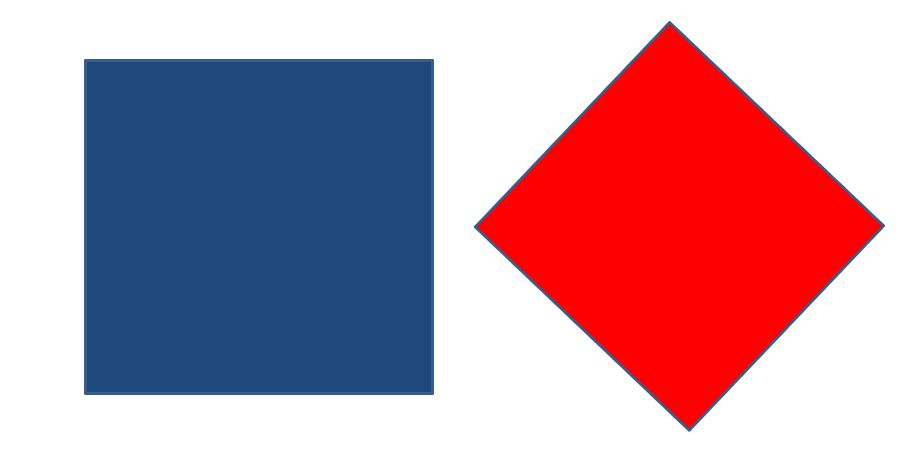
Or did you see a red square surrounded by four small blue triangles?
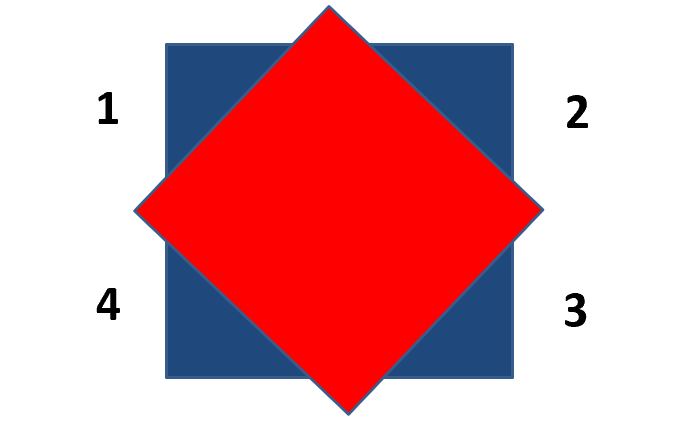
What caused you to see it the way you did? About a hundred years ago, some German scientists who studied how our visual perception works proposed a set of “Gestalt” principles, a word that means that we see things as a “whole” rather than as a set of parts. These principles capture the idea that our minds have a bias toward simple explanations, and it is simpler to see two overlapping squares than to see the small blue squares surrounding the red square. (You can measure “simpler” here by counting the number of words it takes to describe the two interpretations).
FIGURE AND GROUND
The first principle proposed by the perception scientists is that we automatically organize some part(s) of the visual field as in the front – the FIGURE – and other parts as in the back – the GROUND. When the visual information is ambiguous, this can result in two alternating interpretations.
What do you see here?
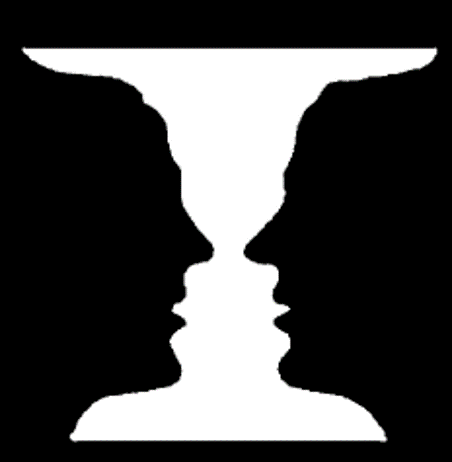
This famous drawing is called the FACE-VASE ILLUSION because people either see two faces or a single vase. The brain can only make sense of the world in one way at any point in time – we see the face or the vase, but not both. Flipping between the face and vase interpretations involves changing which part of the image is “figure” and which is “ground.”
What do you see here?
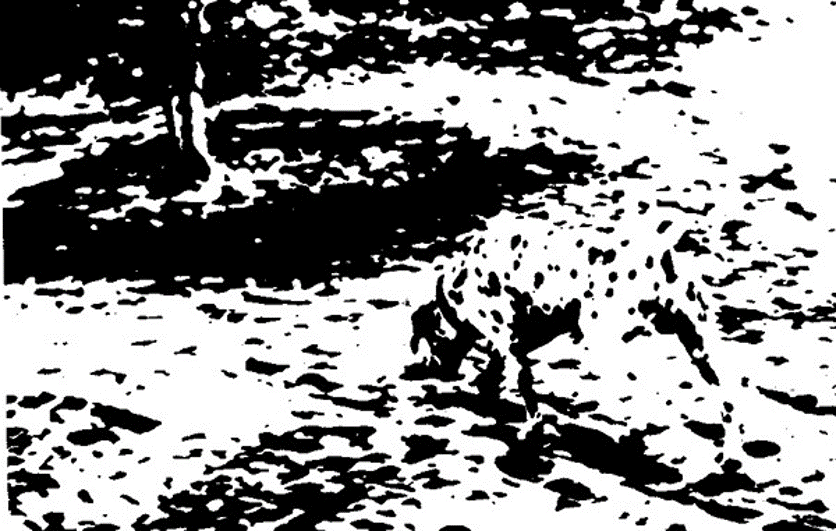
In this picture because there are many black and white regions it hard to see some of them as the FIGURE and some of them as the GROUND. But if you stare at the right side of the picture and try to see a Dalmatian dog (with black spots on its body) sniffing at the ground, it will suddenly pop into your mind. And then you will always see the dog when you see this picture.
PROXIMITY
What do you see here?

The Gestalt principle of PROXIMITY says that objects close to each other, especially when they are aligned, are perceived as belonging together. So here the most likely perception is that you see three groups of dark dots, each of which consists of two columns of three dots.
SIMILARITY
What do you see here?
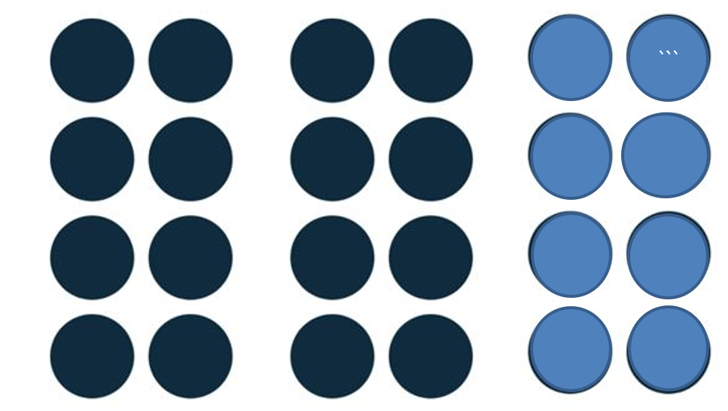
The Gestalt principle of SIMILARITY says that our visual system sees things that look similar as being in the same group. This means that if we change the color of some of the dots, the similarity principle makes us see them as a group. So now there are two groups of dots, the black ones on the left and the blue ones on the right.
CONTINUITY
What do you see here?

In the pattern on the left, you probably perceive two lines of dots that cross over. In the middle pattern, you probably perceive a border-less white triangle that is on top of three sets of four concentric circles. In the pattern on the right, you probably perceived a border-less white square on top of another white square with black borders, and both of the white squares touch four small black circles.
CLOSURE
What do you see here?

WHY DOES THIS MATTER?
Because the Gestalt principles are a shorthand way to describe “automatic organizing,” if we use these principles in visual designs we can cause people to interpret them in predictable ways. Sometimes this will make it easy for people to do something they want to do. For example, if a supermarket uses the principles of PROXIMITY, SIMILARITY, and CONTINUITY to arrange the peppers, it is very easy to select a pepper by its color.
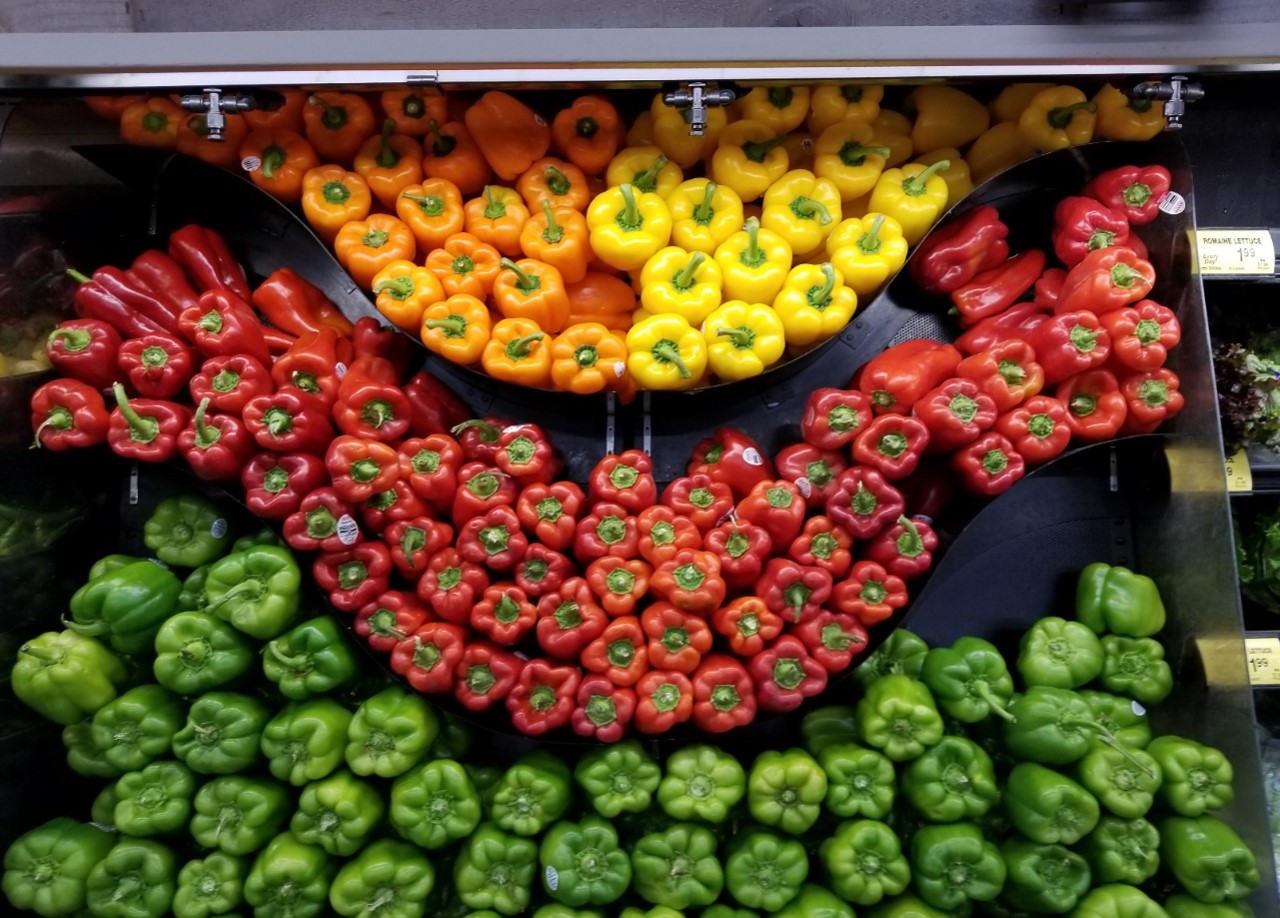
But at other times, Gestalt principles of visual perception can be used to trick people into not seeing things or seeing things in ways that are illusions rather than real. You’ll learn how this works in the next lesson.

